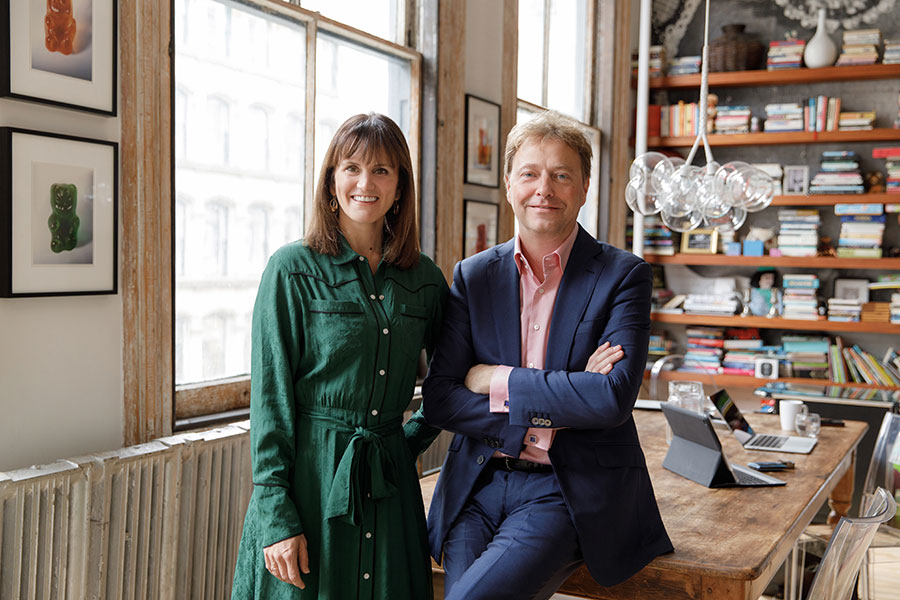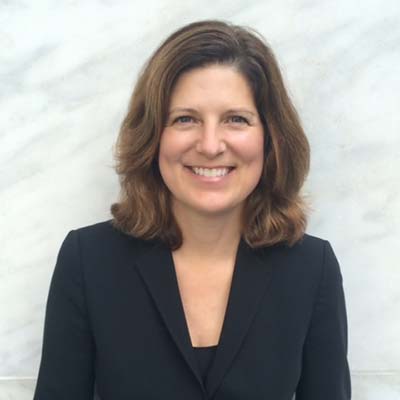 Eat more fish for a healthy diet, but what about raising more fish for a healthy portfolio and planet?
Eat more fish for a healthy diet, but what about raising more fish for a healthy portfolio and planet?
That’s the idea behind Aqua-Spark, an investment fund with a focus on sustainable aquaculture businesses around the world.
The small-to-medium enterprises (SMEs) in which it invests “are working across the value-chain toward the production of healthy, sustainable and, accessible aquatic life, such as fish, shellfish and plants,” according to the company.
It aims to create triple impact—specifically, “each investment is chosen for its potential to generate significant financial returns while also activating positive environmental and social outcomes.”
Amy Novogratz (above left), the firm’s co-founder and managing partner, explains what aquaculture is, what it entails and the lasting investing and environmental returns it can generate.
What was the ‘spark’ that started Aqua Spark?
My partner and I met through an ocean conservation event that I produced with TED and deep ocean explorer Sylvia Earle. After a week spent immersed in ocean-related challenges, on a boat in the Galapagos with a hundred committed individuals, we left wanting to do something together to preserve ocean health.
We came across aquaculture and were stunned by the size of the industry and how quickly it’s growing. Aquaculture will play a big role in the future of our ocean and food security, and though it has the potential to be the most resource efficient food system, current practices are far from efficient. It’s a highly fragmented industry with no real dedicated financing streams, and we see a big opportunity to influence how the industry grows.
How did you personally become involved in the work?
After running the TED Prize for almost a decade, I became adept at cultivating large scale global collaborations that brought different types of thinking together to form solutions. With a challenge as big as transforming the global aquaculture industry, we knew we needed to work with many partners and create synergies across the value chain and geographies. I wear many hats as a Managing Partner, but spend a lot of time developing and nurturing a global aquaculture ecosystems, aligning visions and fostering collaboration. I am very excited that we live in a time where we can take so many perspectives into account, and work towards redesigning an aquaculture system that works for us all.
You mention real power comes from collaboration and partnership. How?
The scale of this challenge is too big for any one company or group to do it alone. Globally, we are farming almost 700 species in diverse environments ad economies, using different operating systems. But there has been a lot of knowledge gained in recent decades. New solutions have been developed and many stakeholders have entered the space with the vision of a more sustainable industry.
We need to triple aquaculture production globally by 2050. And as a relatively undeveloped industry, with few regulations, little technology, minimal data usage, there is a huge opportunity to take a far reaching, multisector, multilevel approach in order to transform practices and lift aquaculture to its potential. Sustainable aquaculture will be a core part of our future food system, and we need to keep the big picture in mind.
As part of your approach and philosophy, you note that entrepreneurs and investors have the power to change the world. How do you tap that creative energy to achieve your mission?
Aquaculture is a good example of an industry where doing things sustainably is better business in the long run. We need the right solutions to scale in order to get the industry to the point where sustainability is accessible and cost effective. This is going to be driven by innovative, committed entrepreneurs and investors who are going to back them. In less than five years, with our portfolio leaders, we’ve seen that we can redirect the aquaculture industry to be cleaner, more efficient and far more sustainable, and many large investors and industry strategics are taking notice and getting on board.
What kind of evaluation/selection process do you engage in?
Our investment team does thorough due diligence. First, we look at what the company is solving in the aquaculture industry, how they are different and how they help us reach our impact goals. We look at the strength of the team and how they fit into our portfolio. We have a synergistic portfolio, where our companies work together and benefit from each other. We make sure they are going to add value to the other companies and get value in return.
We involve our network of experts and partners in the different stages of due diligence, in assessing the product, the market, the partners, the industry fit, etc. One of our industry experts always joins us on our site visits and produces a separate report alongside our team’s report.
Is there an anecdote about one or two that you could elaborate on now in terms of impact?
A simple example of how new technologies can play a clear role in cleaning up the industry is eFishery, an aquaculture tech company based in Bandung, Indonesia. They use sensors to gauge water movement, which then codes how much a fish is moving, and then has an algorithm that determines the appetite of the fish to feed them automatically.
It’s truly revolutionary, but also really affordable. It saves farmers up to 24 percent each cycle of feed. Feed can be up to 80 percent of the cost of operating a farm. So, it’s huge economically. But also, feed is one of the big pollutants and also plays a big role in fish health. When you’re talking about aquaculture, getting feed right is one of the big challenges/opportunities.
How can innovative philanthropic capital play a bigger role in something like sustainable aquaculture?
When you look at the blended needs of different capital in aquaculture and the different partners working in aquaculture, there’s an immense amount of opportunity. We have a private equity offering, for example, as an investment option in ImpactAssets’ donor advised fund. We are also planning to launch a subset of our fund that’s focused solely on sub-Saharan Africa. We’re talking to a number of different foundations that would potentially have an interest in economic development and food security in Africa, so there’s a great opportunity here. Philanthropic capital can be “patient capital.” It will help us start to create a financing model to develop the industry, de-risk aquaculture investments and build a track record in aquaculture in Africa – and in aquaculture generally.
What’s the outlook for aquaculture growth?
We hit a point a couple of years ago where we’re actually producing more fish via aquaculture globally for human consumption than we’re catching in the wild. Aquaculture is also bigger than beef. Tripling the industry means we need to produce an additional 140 million metric tons of fish in the next thirty years. Taking into account how much of that will be fed species, it means we will need 8 times the amount of feed, just for aquaculture.




































